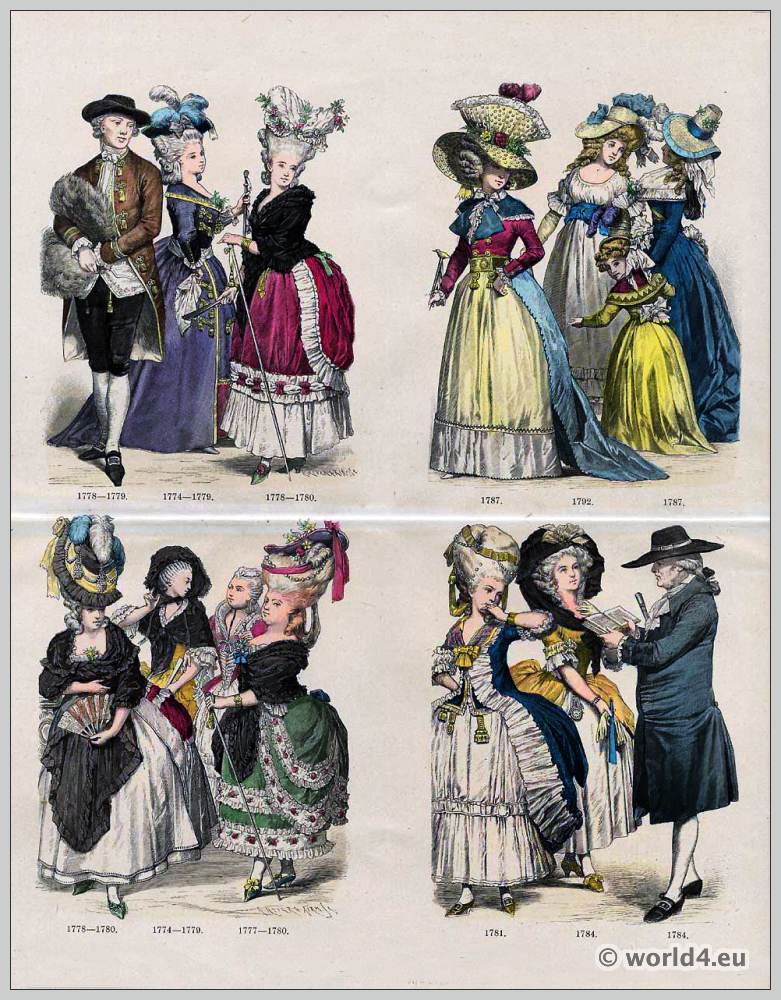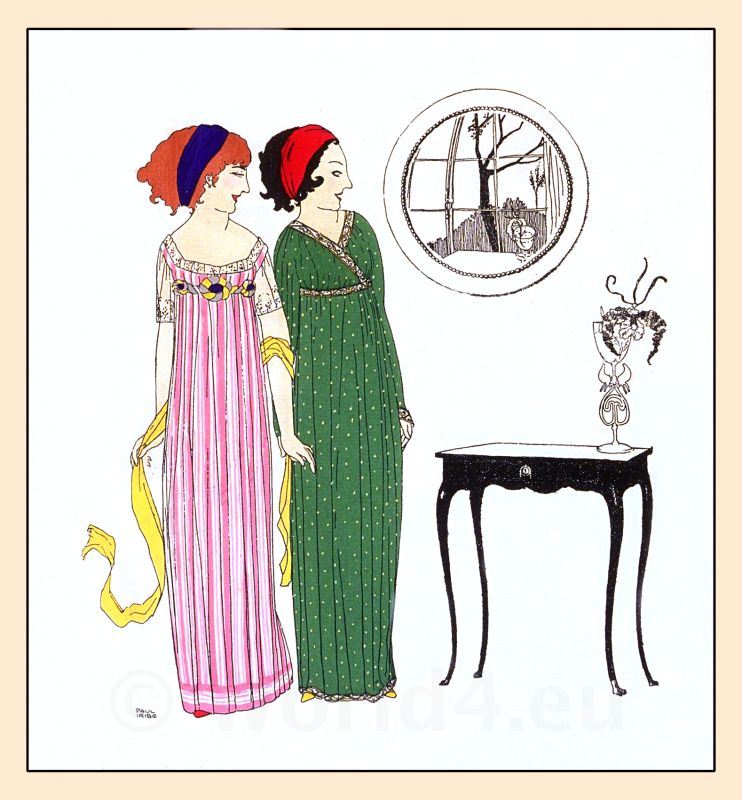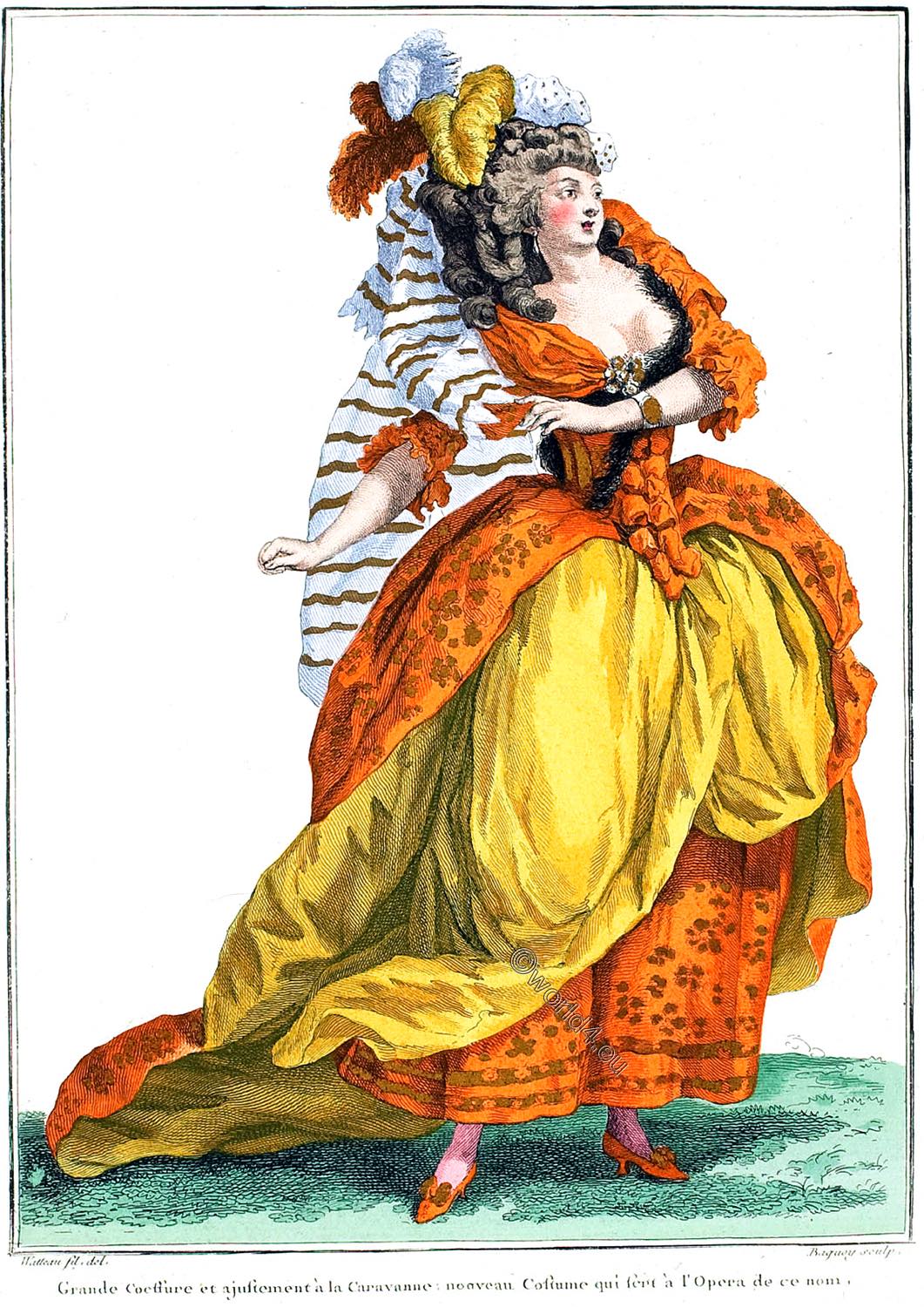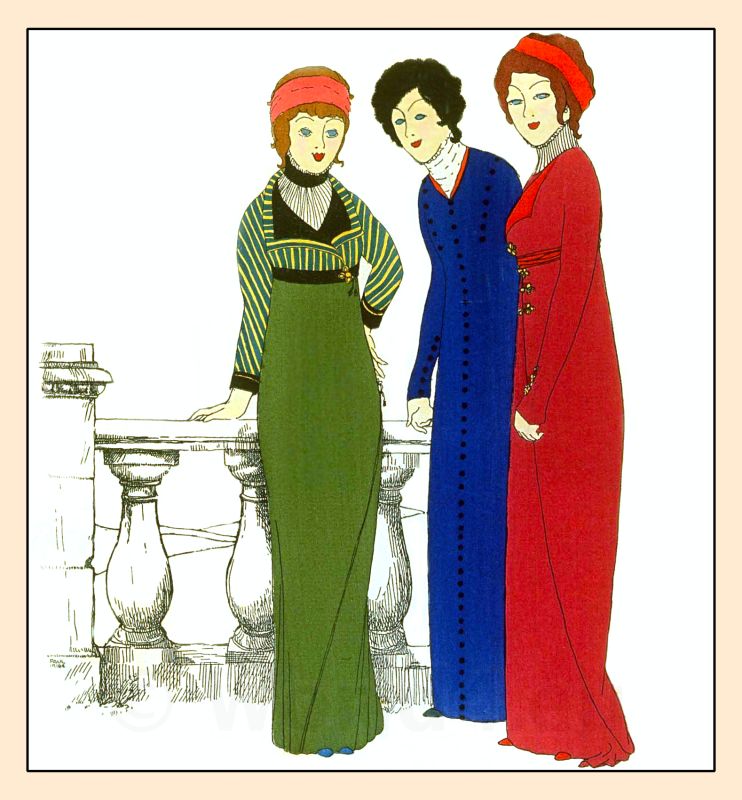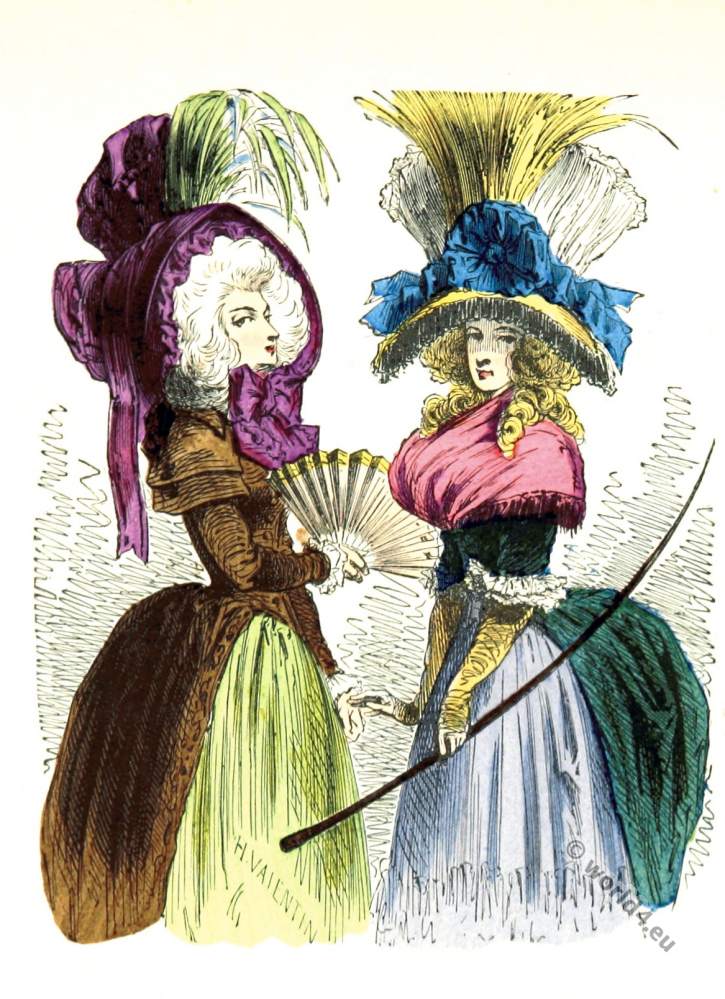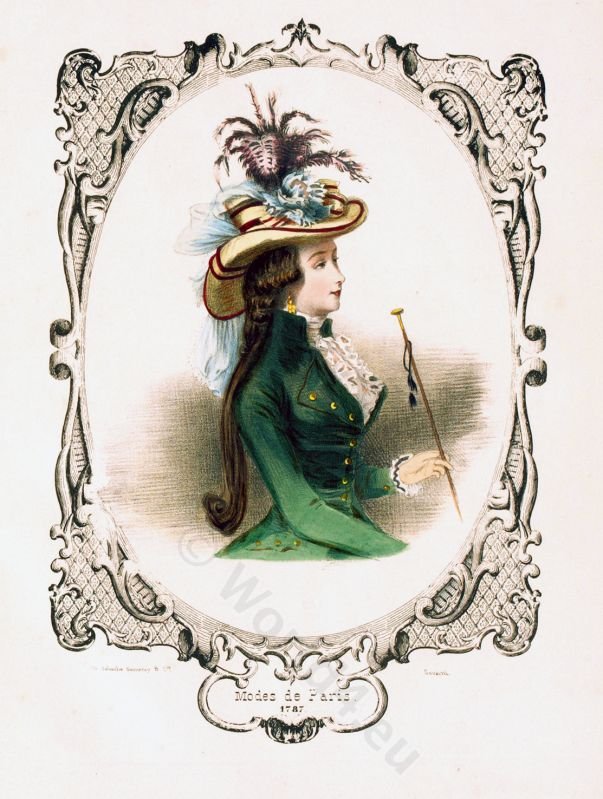
Caraco à la anglaise. Modes de Paris, 1787.
Costume Illustration of a woman with a wide-brimmed hat with feathers. Caraco of green silk brocade with gold decorative buttons and lace ruffles.
From the book: Costumes historiques pour travestissements par Paul Gavarni (Guillaume Sulpice Chevalier 1804-1866)
Related:
- Fashion in the Reign of Louis XV. 1715 to 1774
- Fashion in Reign of Louis XVI. 1774 to 1780.
- The Evolution of Modern Feminine Fashion 1786.
- Fashion History France
Discover more from World4 Costume Culture History
Subscribe to get the latest posts sent to your email.

